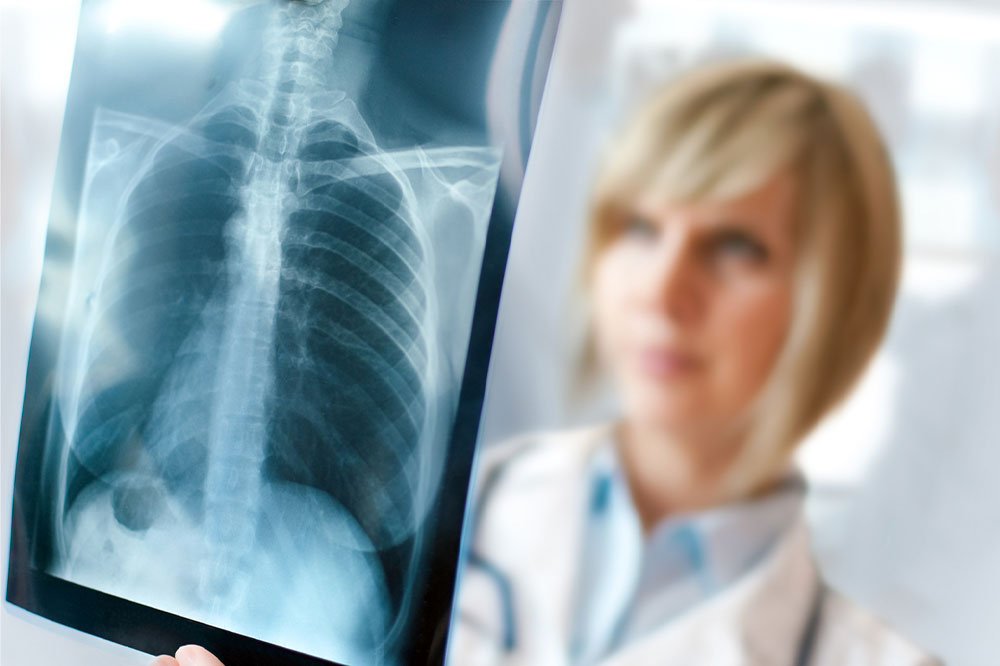Causes and Management Options of Lung Nodules
Lung nodules, also known as pulmonary nodules, are small, round, or oval-shaped growths that form on the lungs and tissues. They are often detected incidentally during routine imaging tests, such as chest X-rays or CT scans. Discovering a lung nodule can be a cause for concern, but rest assured, advancements in healthcare technology and treatment options have significantly improved outcomes for patients.

Understanding the causes of lung nodules
Most lung nodules are benign and require close monitoring rather than immediate intervention. However, it is crucial to investigate the underlying cause of the nodule.
- Infection
Lung infections, such as tuberculosis, fungal infections, or bacterial pneumonia, can lead to the formation of nodules. These infections cause inflammation and immune responses in the lung tissues, resulting in the development of nodules. Treating the underlying infection is necessary for resolving these nodules. Antibiotics, antifungal medications, or specific treatments for tuberculosis can be prescribed to eliminate the infection and promote nodule resolution. - Inflammatory conditions
Certain inflammatory conditions, like sarcoidosis or rheumatoid arthritis, can cause the development of lung nodules. Sarcoidosis is an autoimmune disease characterized by the formation of granulomas in various organs, including the lungs. Lung nodules associated with sarcoidosis are typically noncancerous and can resolve on their own or with anti-inflammatory prescriptions. In cases of rheumatoid arthritis, lung nodules can occur due to inflammation in the lung tissues. - Benign tumors
Noncancerous growths, such as hamartomas or pulmonary fibromas, can appear as lung nodules. Hamartomas are composed of a mixture of normal lung tissues and can be surgically removed if they cause symptoms or grow in size. Pulmonary fibromas are rare tumors that arise from the connective tissues of the lung. Treatment typically involves surgical removal of the nodule. - Lung cancer
Lung nodules can also be a result of primary or metastatic lung cancer. Primary lung cancer originates in the lung tissues, while metastatic lung cancer spreads to the lungs from other parts of the body. Early detection and timely treatment play a critical role in managing cancerous nodules effectively. Treatment options for lung cancer include surgery, radiation therapy, chemotherapy, targeted therapy, immunotherapy, or a combination of these approaches.
Exploring treatment options for lung nodules
When treating lung nodules, the approach depends on various factors, including their size, characteristics, and the likelihood of cancer. Here are some possible treatment options that can be considered:
Watchful waiting
In cases where the lung nodule is small, stable, and shows no concerning features, the doctor can recommend a watchful waiting approach. Regular imaging tests, such as CT scans, will be conducted to monitor the nodule for any changes over time. This approach is often suitable for benign nodules or those with a low risk of malignancy.
Biopsy
Even after watchful waiting, the lung nodule is observed to have grown, a biopsy might be required. It is also recommended when the nodule appears suspicious. A small tissue sample is extracted from the nodule to further examine it under a microscope. The testing process helps determine the nature of the nodule and distinguish if it is benign or cancerous. Biopsies can be performed through various methods, including bronchoscopy, needle aspiration, or surgical biopsy.
Radiofrequency ablation
Radiofrequency ablation (RFA) is a minimally invasive procedure that uses heat to destroy the lung nodule. During RFA, a thin needle electrode is inserted into the nodule, and high-frequency electrical currents are applied to heat and destroy the abnormal tissue. This technique is typically employed for small, localized nodules that are not suitable for surgical removal.
Stereotactic Body Radiation Therapy (SBRT)
SBRT is a specialized form of radiation therapy that delivers precise and intense radiation to the lung nodule while minimizing exposure to surrounding healthy tissues. This treatment is often used for small lung nodules or in cases where surgery is not feasible. SBRT requires multiple treatment sessions over a few weeks.
Chemotherapy
This is a commonly used treatment for cancer. It involves using powerful compounds that either slow their growth or kill cancer cells. Chemotherapy can be used as a primary treatment option for cancer management in case of advanced lung cancer. Alternatively, it can be used in combination with options like radiation therapy or surgery. The specific chemicals and treatment regimen depend on the type and stage of the cancer.
Targeted therapy
In this treatment method, the aim is to specifically target genetic or molecular abnormalities present inside cancer cells. Targeted therapy works by interfering with specific pathways or molecules that are involved in the growth of cancer cells. This therapy is often used for specific types of lung cancer, such as those with certain genetic mutations.
Immunotherapy
As the name suggests, immunotherapy utilizes the body’s immune system to fight cancer cells. The treatment works by stimulating the immunity of an individual and blocking proteins that can prevent immune cells from attacking cancer cells. Immunotherapy has shown promising results in treating certain types of lung cancer. It is often used in advanced stages cancer treatment or as a part of a combination treatment approach.
Surgical resection
Surgical removal of lung nodules can be deemed necessary in some cases. It might be an unavoidable option in case of cancerous cells that cannot be treated with non-surgical options. It is also useful if the nodule is causing any obstruction or giving rise to complications. This procedure, known as a lung resection, involves removing the nodule and a margin of healthy lung tissue. The extent of the surgery depends on the size, location, and characteristics of the nodule.











